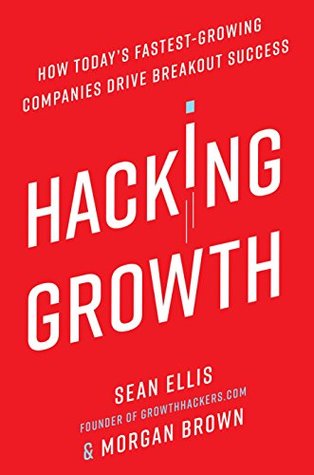More on this book
Community
Kindle Notes & Highlights
by
Sean Ellis
Read between
August 23 - August 23, 2019
the core elements of the method are: • the creation of a cross-functional team, or a set of teams that break down the traditional silos of marketing and product development and combine talents; • the use of qualitative research and quantitative data analysis to gain deep insights into user behavior and preferences; and • the rapid generation and testing of ideas, and the use of rigorous metrics to evaluate—and then act on—those results.
rapid experimentation to find the top performers. The process is a continuous cycle comprising four key steps: (1) data analysis and insight gathering; (2) idea generation; (3) experiment prioritization; and (4) running the experiments, and then circles back to the analyze step to review results and decide the next steps.
One of the cardinal rules of growth hacking is that you must not move into the high-tempo growth experimentation push until you know your product is must-have, why it’s must-have, and to whom it is a must-have: in other words, what is its core value, to which customers, and why.
(1) Can you tell us why you signed up in the first place?; (2) What didn’t work for you? Why’d you bail?; (3) What caused you to come back and try it again?; and (4) What worked this time?
growth hacking involves more than picking from a menu of hacks; it is, rather, a process of continuous experimentation to ensure that those hacks are achieving the desired results.
Creating an aha moment and driving more people to it is the starting point for hacking growth. The next step is to determine your growth strategy. You have to understand exactly how you’re going to drive growth—what your growth levers are and whether they are the right ones to achieve desired results—before you move into high-tempo testing of growth ideas.
The first step in determining your growth strategy and figuring out where to focus is to understand which metrics matter most for your product’s growth.
To hone your growth equation and narrow your focus, it’s best to choose one, key metric of ultimate success that all growth activity is geared toward.
The North Star should be the metric that most accurately captures the core value you create for your customers. To determine what that is you must ask yourself: Which of the variables in your growth equation best represents the delivery of that must-have experience you identified for your product?
“A good plan violently executed now is better than a perfect plan tomorrow.”
metrics should be presented as ratios rather than static numbers.
Numbers also need to be accompanied by an indicator if they are above trend, below, or on par with past performance.
Numbers can also be compared with a goal.
Learning more by learning faster is also the goal—and the great benefit—of the high-tempo growth hacking process.
The companies that grow the fastest are the ones that learn the fastest. The more experiments you run, the more you learn. It’s really that simple. The high volume is ideal, because most experiments fail to produce the results you’re hoping for.
in order to maximize the number of experiments you can run and the gains you achieve from them, it’s essential to follow a highly disciplined process that allows you to create a pipeline of good ideas and efficiently prioritize them.
We advise that teams start slow and build to a faster tempo after the team gets its footing with the new process; trying to launch too many experiments right off the bat can lead to poor test implementation, team confusion, and discouragement as targets are missed.
“The best way to have a good idea is to have lots of ideas.”
members should submit as many ideas as possible for hacks to try
ICE score system, with ICE standing for Impact, Confidence, and Ease, as a way to organize all the ideas generated in the ideation process of the cycle.
you should not launch into a full-court press for large-scale customer acquisition until you’ve achieved product/market fit—i.e., until you’ve determined not only that you have a good product, but that your product is compelling to its target market.
The first phase of work in scaling up your acquisition of customers should be devoted to achieving two additional types of fit: language/market fit, which is how well the way you describe the benefits of your product resonates with your target audience, and channel/product fit, which describes how effective the marketing channels are that you’ve selected to reach your intended audience with your product,
you must craft language that very concisely communicates your product’s core value—conveying the aha moment—and answers the simple question foremost in every consumer’s mind: “How is this thing you’re showing me going to improve my life?”
discover ideas and insights that will produce dramatic gains in activation for your product. To recap, those steps are: map all of the steps that get users to the aha moment; create a funnel report that profiles the conversion rates for each of the steps and segments users by the channel through which they arrive; and conduct surveys and interviews both of users who progressed through each step where you’re seeing high drop-offs, and those who left at that point to understand the causes of drop-off.


